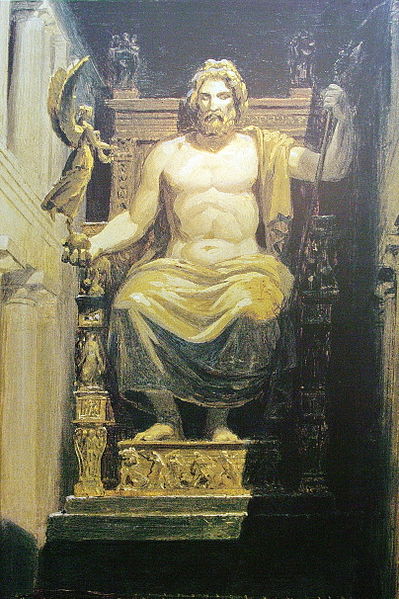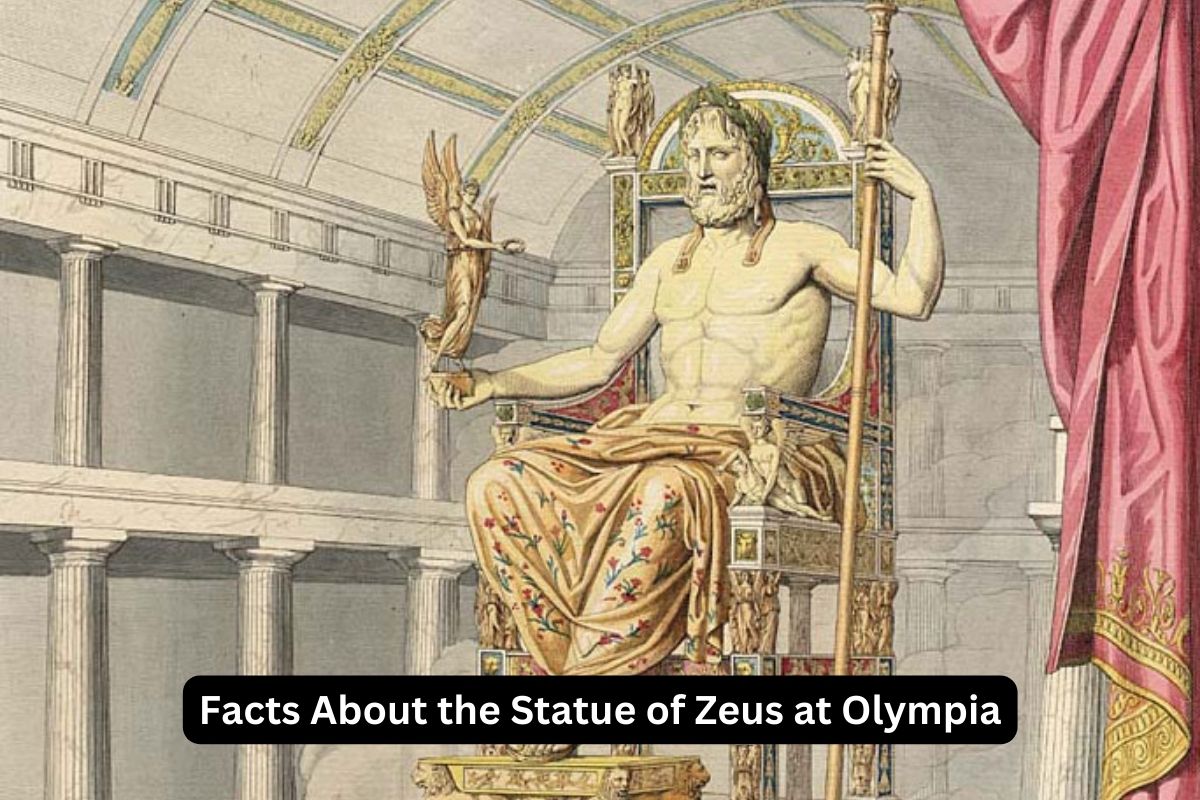The Statue of Zeus at Olympia was an extraordinary masterpiece created by the renowned sculptor Phidias in ancient Greece.
Commissioned by the people of Elis, it was a colossal seated figure of Zeus, the king of the gods.
The statue stood over 40 feet tall and was made of ivory and gold, showcasing Phidias’s exceptional craftsmanship. Housed in the Temple of Zeus in Olympia, it served as a symbol of religious reverence and the might of the city.
Regarded as one of the Seven Wonders of the Ancient World, the statue left a lasting impact on Greek art and sculpture, despite its likely destruction in the 5th century AD.
The Statue of Zeus at Olympia Facts
1. Created by sculptor Phidias
The Statue of Zeus at Olympia was the masterpiece of the renowned Greek sculptor Phidias. Phidias was widely regarded as one of the greatest sculptors of ancient Greece and was known for his exceptional skill and artistry.
Also Read: Facts About the Mausoleum at Halicarnassus
He was also responsible for other famous sculptures, including the statue of Athena Parthenos in the Parthenon.

2. Commissioned by the people of Elis
The statue was commissioned by the people of Elis, a city-state located in the western part of the Peloponnese region in ancient Greece.
The city of Elis had control over the sanctuary of Olympia, where the Olympic Games were held, and they decided to honor Zeus, the king of the gods, with a magnificent statue in the nearby Temple of Zeus.
3. Made of ivory and gold
The Statue of Zeus at Olympia was crafted using a combination of materials. The inner framework of the statue was made of wood and metal, providing structural support.
The outer surfaces were adorned with different materials, with the flesh parts of Zeus sculpted from ivory, and the clothing and other details made from gold.
Also Read: The Temple of Artemis Facts
The ivory represented the flesh in a lifelike manner, while the gold added opulence and splendor to the statue, reflecting the divine nature of Zeus as a deity.
The use of these precious materials contributed to the statue’s grandeur and elevated its status as a marvel of ancient art and craftsmanship.
4. Stood over 40 feet (12 meters) tall
The Statue of Zeus at Olympia was an enormous sculpture, towering over 40 feet (12 meters) in height. The seated figure of Zeus, along with the ornate throne, reached such an impressive size that it made the statue one of the largest of its time.
Its immense scale contributed to the awe-inspiring presence of the statue and its ability to captivate the visitors of the temple.
5. Depicted Zeus seated on a throne
The statue depicted Zeus, the king of the gods in Greek mythology, in a seated position on a majestic throne.
The details of the throne were meticulously crafted and adorned with intricate carvings, decorative motifs, and precious gems. The throne symbolized Zeus’s regal authority and his status as the ruler of the gods.
6. Held a scepter and a statue of Nike
In the statue’s hands, Zeus held significant objects. One hand grasped a scepter, a symbol of power and authority, signifying Zeus’s role as the king of the gods.
In the other hand, he held a statue of Nike, the Greek goddess of victory, which symbolized Zeus’s association with triumph and success. These attributes showcased the divine attributes of Zeus and his ability to bring victory and power to his worshippers.
The combination of Zeus’s seated posture, the elaborate throne, and the objects he held contributed to the portrayal of Zeus as a majestic and powerful deity, embodying the qualities and attributes that the ancient Greeks associated with him.
7. Housed in the Temple of Zeus in Olympia
The Statue of Zeus at Olympia was housed in the Temple of Zeus, a grand sanctuary dedicated to the Greek god Zeus. The temple was located in Olympia, a sacred site in ancient Greece where the Olympic Games were held.
The statue was the centerpiece of the temple and served as a focal point for religious ceremonies, rituals, and festivals. Its presence within the temple elevated the sanctity and significance of the site as a place of worship and divine reverence.
8. Considered one of the Seven Wonders of the Ancient World
The Statue of Zeus at Olympia was regarded as one of the Seven Wonders of the Ancient World. The list of the Seven Wonders was compiled by various ancient writers and scholars to showcase the most extraordinary and remarkable creations of human civilization.
Being included on this prestigious list solidified the statue’s status as an exceptional work of art, craftsmanship, and cultural significance.
9. Likely destroyed or damaged in the 5th century AD
While the exact fate of the Statue of Zeus at Olympia remains uncertain, it is believed to have been destroyed or severely damaged in the 5th century AD.
The temple, including the statue, likely fell victim to a series of invasions, earthquakes, and fires that plagued the region during that time.
The statue’s destruction marked the end of its impressive reign and left subsequent generations only with descriptions and depictions to imagine its magnificence.
10. Left a lasting impact on Greek art and sculpture
Despite its eventual demise, the Statue of Zeus at Olympia had a significant influence on Greek art and sculpture. Phidias’s creation set new standards for artistic representation and became a reference point for future sculptors.
The lifelike rendering of Zeus’s features, the attention to detail, and the monumental scale of the statue inspired subsequent generations of artists to strive for excellence in their craft.
The legacy of the Statue of Zeus at Olympia can be seen in later depictions of gods and heroes in Greek and Roman art, as well as in the broader tradition of monumental sculpture throughout history.
The Statue of Zeus at Olympia, with its place in the grand temple and its recognition as one of the Seven Wonders of the Ancient World, continues to capture the imagination and admiration of people today, even though physical remnants no longer exist.
